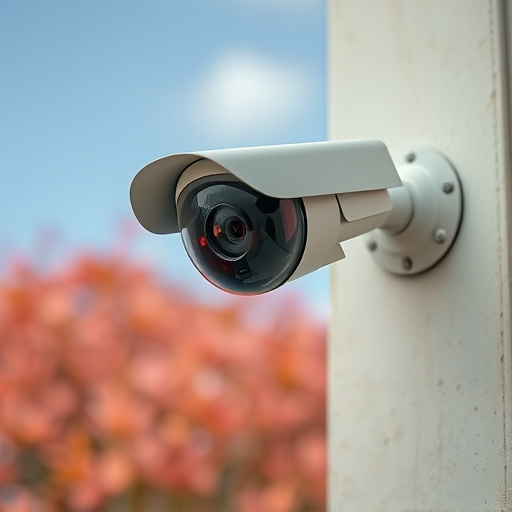Mounting realistic dummy cameras under eaves offers discreet outdoor security by leveraging natural protection from weather and providing a visual deterrent to intruders, but it's limited by lack of real-time monitoring and potential weather impacts. Strategically placed for optimal visibility, these cameras enhance peace of mind while maintaining an aesthetically pleasing exterior.
“Enhance your outdoor security with weatherproof fake security monitoring cameras—a cost-effective alternative to real surveillance systems. This comprehensive guide explores how understanding weatherproof dummy cameras can boost your home or business’s safety. We delve into effective mounting strategies, optimizing visibility by placing them under eaves for maximum discretion. Additionally, discover the advantages and limitations of outdoor security cameras, offering a balanced perspective on this innovative solution.”
- Understanding Weatherproof Dummy Cameras
- Mounting Strategies for Optimal Visibility
- Advantages and Limitations of Outdoor Security Cameras
Understanding Weatherproof Dummy Cameras
Weatherproof dummy cameras are designed to mimic real security surveillance equipment, providing a visual deterrent to potential intruders. These fake cameras are built to withstand various weather conditions, ensuring they can be strategically placed outdoors without fear of damage or malfunction. One common mounting technique for these devices is under eaves, taking advantage of the natural protection offered by overhangs and roof lines.
By installing dummy cameras in this manner, homeowners and business owners alike can benefit from enhanced security without the need for extensive wiring or complex setups. The cameras are typically made from durable materials like plastic or metal, featuring realistic designs that blend seamlessly with their surroundings. This subtle placement under eaves allows for a comprehensive view of entry points and vulnerable areas while maintaining an aesthetically pleasing exterior.
Mounting Strategies for Optimal Visibility
Mounting dummy cameras under eaves is a strategic approach that maximizes their visibility while maintaining discreetness. This technique leverages the natural protection offered by overhangs, ensuring the cameras are shielded from direct sunlight and extreme weather conditions. By installing them in this location, you gain a clear line of sight towards potential entry points without compromising the aesthetic appeal of your property.
Optimal placement involves considering the camera’s field of view and ensuring it covers all vulnerable areas. This may involve multiple mounting angles or the use of adjustable brackets to accommodate various roof lines and structures. A well-planned installation can provide comprehensive surveillance, deterring intruders while allowing for efficient monitoring from a safe distance.
Advantages and Limitations of Outdoor Security Cameras
Outdoor security cameras, whether real or dummy, offer enhanced safety and peace of mind for homeowners. One significant advantage of mounting dummy cameras under eaves is the element of surprise they provide. Criminals are less likely to target properties with visible security measures, creating a natural deterrent effect. Additionally, these fake cameras can be an effective way to deter vandalism and unwanted intrusions without the high cost and maintenance associated with real surveillance systems.
However, there are limitations to consider. Dummy cameras do not offer real-time monitoring or immediate responses to potential threats. They also rely on their strategic placement to be effective; if positioned incorrectly or blocked by obstructions, their ability to deter crime can be diminished. Moreover, while they are weatherproof and designed for outdoor use, extreme weather conditions might affect their visibility and overall effectiveness over time.
Weatherproof outdoor fake security monitoring cameras, with their mounting strategies like positioning under eaves, offer a cost-effective way to enhance home security. While they have advantages such as deterring potential intruders and providing peace of mind, it’s essential to acknowledge their limitations, including not being actual surveillance tools. By understanding the optimal placement and benefits, homeowners can make informed decisions about using dummy cameras as part of a comprehensive security strategy.
